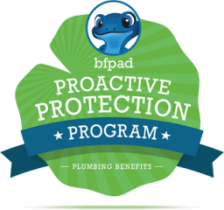
How Does A Plumber Perform A Water Loss Audit? | Houston Heights
A plumber performs a water loss audit to ensure that a building is not losing water due to leaks. This is important because leaks can lead to higher water bills, and they can also cause damage to the building. How is it done? This article will give you an overview of the water audit process.
Water Loss Audit Methods
Visual Inspection
The first step any plumber in Houston Heights will take is to conduct a visual inspection inside and outside of your property. This helps identify potential problem areas where leaks might be prevalent such as discoloration on walls or ceilings, pools of standing water, or an excessively green lawn. The plumber will check for leaks around pipes and fixtures and look for any signs of moisture on the floors or in the air. By performing a thorough visual inspection, plumbers can get a good idea of the scope of the problem and develop a plan to repair the damage. In some cases, a visual inspection may be enough to identify the source of the leak and make the necessary repairs.
Pressure Gauge Method
The pressure gauge method is one of the most common methods of performing a water loss audit. This method involves attaching a pressure gauge to a water line and measuring the pressure in the line over time. The plumber will then monitor the pressure gauge to see if there is any pressure drop. If there is a pressure drop, this indicates that there is a leak somewhere in the system. This method is generally considered accurate, but it can be affected by factors such as the type of pipe used and the amount of water flowing through the line. As a result, this method is used in conjunction with other methods to confirm the presence of a leak.
Thermal Imaging Camera Method
Another common method used to perform a water loss audit is the infrared camera method. This involves using a camera that is sensitive to heat to identify water leaks. The camera is used to scan the rooms in your home, and the plumber looks for areas with a temperature difference. This usually indicates a water leak. This method often finds hidden leaks, such as those behind walls or under floors. It is also a non-destructive way to assess the damage from a water leak.
Tracer Gas Method
The tracer gas method is another common method used to detect leaks. This method involves injecting a tracer gas into the water line and then monitoring the movement of the gas through the piping. A piece of special equipment is used to detect where the gas is escaping from the piping. Wherever the gas is escaping, there is a water leak. The tracer gas is usually a safe, inert gas that is not harmful to humans or the environment. This method is highly accurate and can help pinpoint even the smallest leaks.
Ultrasonic Method
The ultrasonic method is another common method used to perform a water loss audit. This method uses sound waves to detect leaks in the system. The plumber will attach an ultrasonic detector to the water line and then send sound waves through the line. If there is a leak, the sound waves will be reflected in the detector. They can then use this information to locate the leak and make the necessary repairs. This method is often used in conjunction with other methods, such as the tracer gas method, to confirm the presence of a leak.
Factors That Will Count Into the Final Water Audit
Meter read: This is the first place your plumber will look. Your meter will give them an idea of your household’s consumption. If you have high consumption, it’s important to look for the source of the problem. Check all toilets, faucets, and appliances for leaks that could add to your bill.
Installed fixtures: They will next check the number and types of fixtures you have in your Houston Heights home. If you have high-efficiency fixtures, you may use less water than those with older model fixtures. However, if you have a lot of leaks, this could offset any gains made by having high-efficiency fixtures.
People in the household: The more people in your household, the more water you will use daily.
Occupancy rate: This is similar to the number of people in your household but considers how often each person is home. For example, if you have four people living in your house but one person is away at college most of the year, you would have a lower occupancy rate than a family with four people who are all home most days.
Irrigation system: Having an irrigation system can be great for keeping your lawn green and healthy, but it can also be a major source of water loss if it’s not properly maintained. Ensure your system is checked regularly to ensure there are no leaks or other problems that could cause excessive water usage.
Outdoor usage: If you frequently wash your car or hose down your patio, this can add to a significant amount of water loss each month.
Indoor usage: Indoor activities such as laundry and dishes also use large amounts of water each month, so it’s important to be mindful of how often these activities are being done.
Monthly average: Finally, your plumber will ask about your monthly average usage over the past year or so. This will give them an idea of whether or not there has been a recent increase in consumption.
Need a Water Loss Audit? Call Us Today!
If you think you may have a water leak or are interested in having a water loss audit performed in Houston Heights, contact us today at bluefrog Plumbing + Drain of West Houston. We would be happy to come out and look at your home and help you find ways to save water and lower your monthly bill. Give us a call to get started.





;)


